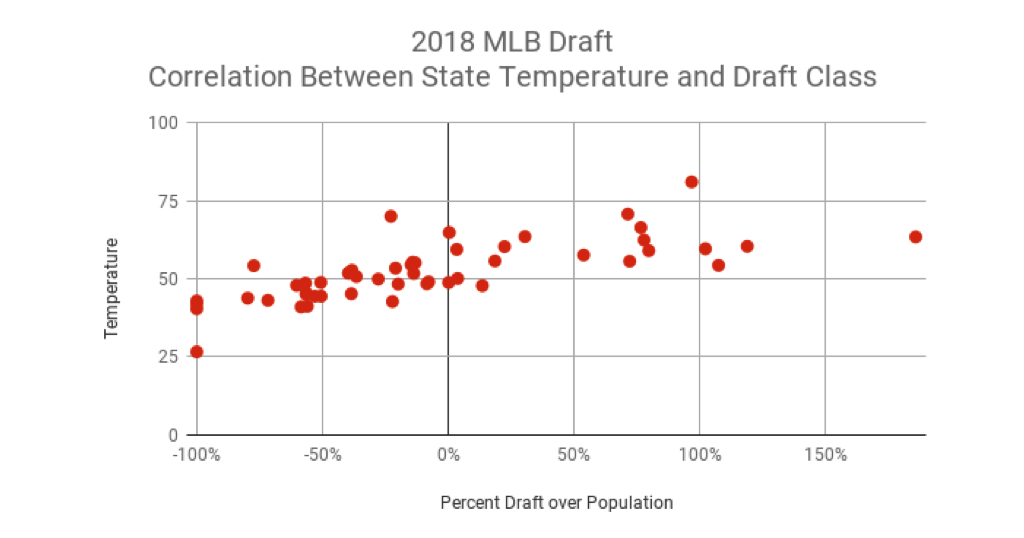My high-school-aged son sits at home yet again. Why? Because another of his baseball games has been canceled due to the wet and cold Ohio spring, and my thoughts turn again to our days playing baseball in Florida. Before we moved to this less-agreeable northern climate, it was a rarity to have a game canceled due to weather. Not only that, but games were scheduled year-round, which of course meant more baseball on the calendar. This situation reminded me of the familiar equation known to baseball fans:
Good weather leads to more playing.
More playing means better players.
But is this true? After all, it’s well-known that the best player in baseball, Mike Trout, is from cold-weather New Jersey. Many quickly point to the fact that California, Texas, and Florida are at the top of the list for states with the most MLB draftees, but they’re the three most populous states. Perhaps proportionally they don’t stack up to colder states after all.
I decided to look at the data from the last two drafts — 2017 and 2018 — to see if there is a relationship between a state’s average temperature and how well its players do in the draft. Do warmer-weather states really produce more MLB draftees than average?

